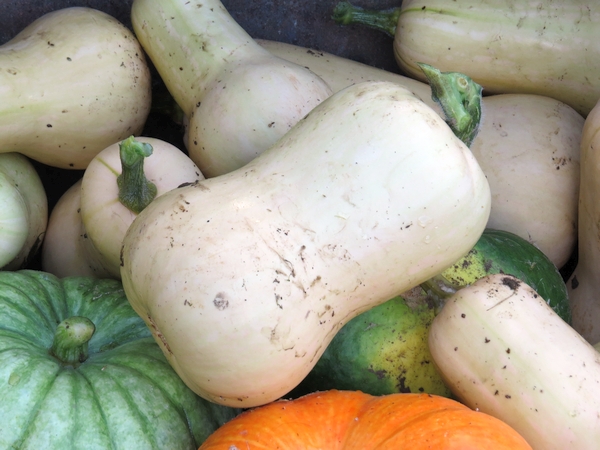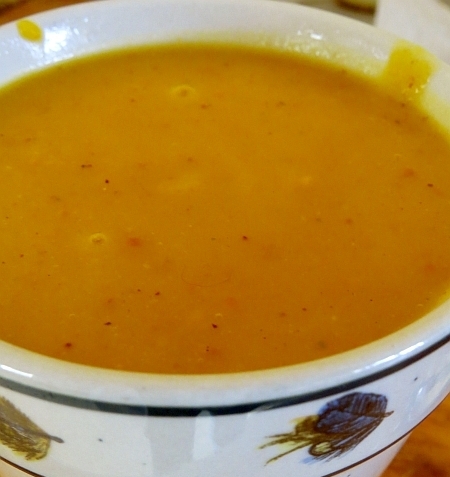Butternut Squash Soup Recipe
The first and second killing frosts came last week, first on Thursday and then on Friday mornings. Some of the winter squash and pumpkins weren’t quite ready to be picked but nothing goes to waste on the homestead. The pigs and poultry are happy to eat the unripened squash. The plants, nearly black a few days later, will feed the micro herd in the soil.
One of my favorite ways to use butternut squash is in soup. It’s creamy and rich, has a hint of nutmeg, and can even be a little spicy. If there’s a winter squash you like more than butternut you can use it instead. A variety that isn’t stringy works best.
Saute two cloves of garlic and one medium onion in EVOO
Peel and seed two pounds of butternut squash, and cut into two inch pieces
Peel and core one medium apple, sliced
Simmer the butternut squash and apple in four cups of chicken stock until squash is cooked. Add onions and garlic, and puree in a blender or with an immersion blender.
Sauteed diced onion and garlic until golden. Add cider and simmer five minutes. Sautee apple in butter until tender. Add chicken stock and squash, cover and cook until squash is tender. Add apple to the pot. Puree either in a blender or with an immersion blender until smooth. Stir in 1/2 cup of cream and nutmeg to taste. Serve warm.
This stores in the fridge for up to a week.
For variations, you can add apple or pumpkin pie spice in place of nutmeg. To add a bit of spiciness, slice a four inch piece of Chirico or Linguica into 1/4″ pieces and pan fry to remove some of the fat and improve flavor, and add to the soup before pureeing.
Winter squash is simple to grow. You’ll need space enough in the garden for the vines to spread, and that amount of space depends on the variety of squash you grow. You can start seeds indoors three weeks before the average last frost date for your area and transplant the seedlings, or start the seeds in the garden. Plants should be from three to six feet apart. The longer the vines grow the further apart the plants should be placed. The soil should be rich with compost and as weed free as possible. The vines will grow together by mid summer and help control the weeds.
Watch for pests such as squash vine borer, cucumber beetles and flea beetles, and treat as necessary.
Harvest mature squash before first frost or cover the plants with a heavy sheet or blanket the night before expected frost. Wait until the sun has warmed the cover before removing.
Cut the squash from the vine and store out of direct sun and rain for 10 days. Most varieties of winter squash will store in a cold cellar, cool closet or even under the bed for several months. Check the stored squash every two weeks while in storage for signs of soft spots or spoiling, and use squash starting to go by first. If necessary, winter squash can be frozen.



